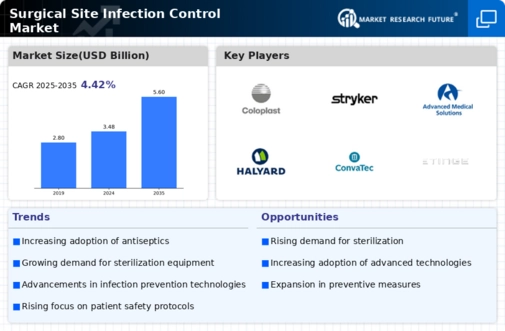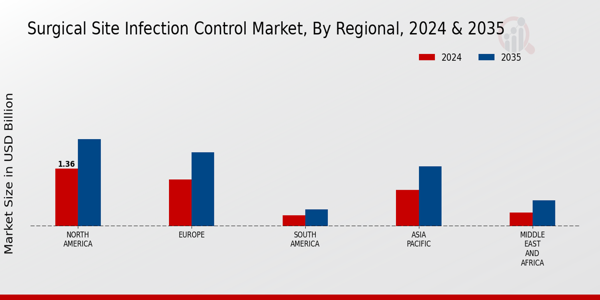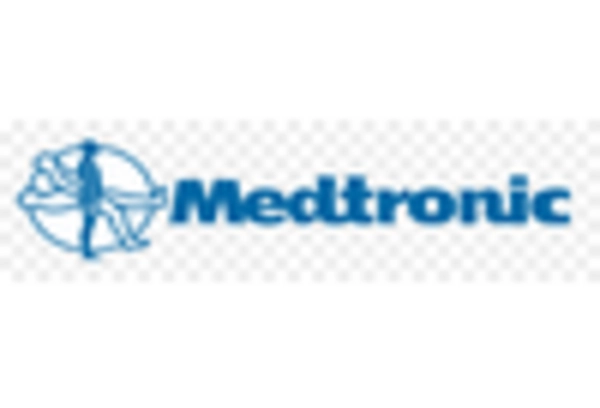Rising Incidence of Surgical Site Infections
The increasing incidence of surgical site infections (SSIs) is a primary driver for the Surgical Site Infection Control Market. Studies indicate that SSIs affect approximately 2 to 5 percent of patients undergoing surgery, leading to extended hospital stays and increased healthcare costs. This alarming trend has prompted healthcare providers to invest in advanced infection control measures. The financial burden associated with SSIs, estimated to be around 10 billion dollars annually, underscores the necessity for effective infection control solutions. As hospitals and surgical centers strive to enhance patient outcomes and reduce readmission rates, the demand for innovative products and services within the Surgical Site Infection Control Market is likely to grow significantly.
Growing Awareness of Infection Control Practices
There is a notable increase in awareness regarding the importance of infection control practices among healthcare professionals and patients alike. This heightened awareness is a significant driver for the Surgical Site Infection Control Market. Educational initiatives and training programs are being implemented to inform healthcare providers about best practices in infection prevention. Furthermore, patients are becoming more informed about their rights and the risks associated with surgical procedures, prompting them to inquire about infection control measures. This shift in awareness is likely to lead to increased demand for infection control products and services, as both providers and patients prioritize safety and quality in surgical care.
Technological Innovations in Infection Prevention
Technological advancements play a crucial role in shaping the Surgical Site Infection Control Market. Innovations such as antimicrobial sutures, advanced sterilization techniques, and real-time monitoring systems are becoming increasingly prevalent. These technologies not only enhance the effectiveness of infection control but also improve surgical outcomes. For instance, the introduction of smart surgical instruments equipped with sensors can provide real-time feedback on sterilization levels, thereby reducing the risk of SSIs. The market for these advanced technologies is projected to expand, driven by the need for improved patient safety and the growing emphasis on evidence-based practices in surgical settings.
Increased Regulatory Scrutiny and Compliance Requirements
The Surgical Site Infection Control Market is significantly influenced by heightened regulatory scrutiny and compliance requirements. Regulatory bodies are implementing stringent guidelines to ensure patient safety and minimize infection risks during surgical procedures. Compliance with these regulations necessitates the adoption of effective infection control practices, which in turn drives demand for specialized products and services. Hospitals and surgical centers are increasingly investing in training programs and infection control protocols to meet these standards. As a result, the market is expected to witness growth as healthcare facilities prioritize compliance and patient safety, leading to a greater emphasis on infection control solutions.
Rising Healthcare Expenditure and Investment in Surgical Facilities
The upward trend in healthcare expenditure is a vital driver for the Surgical Site Infection Control Market. As healthcare budgets expand, there is a corresponding increase in investments in surgical facilities and infection control technologies. Governments and private entities are allocating more resources to enhance surgical infrastructure, which includes the implementation of advanced infection control measures. This investment is crucial for improving patient outcomes and reducing the incidence of SSIs. The market is expected to benefit from this trend, as healthcare providers seek to adopt the latest technologies and practices to ensure the highest standards of care in surgical settings.


















Leave a Comment